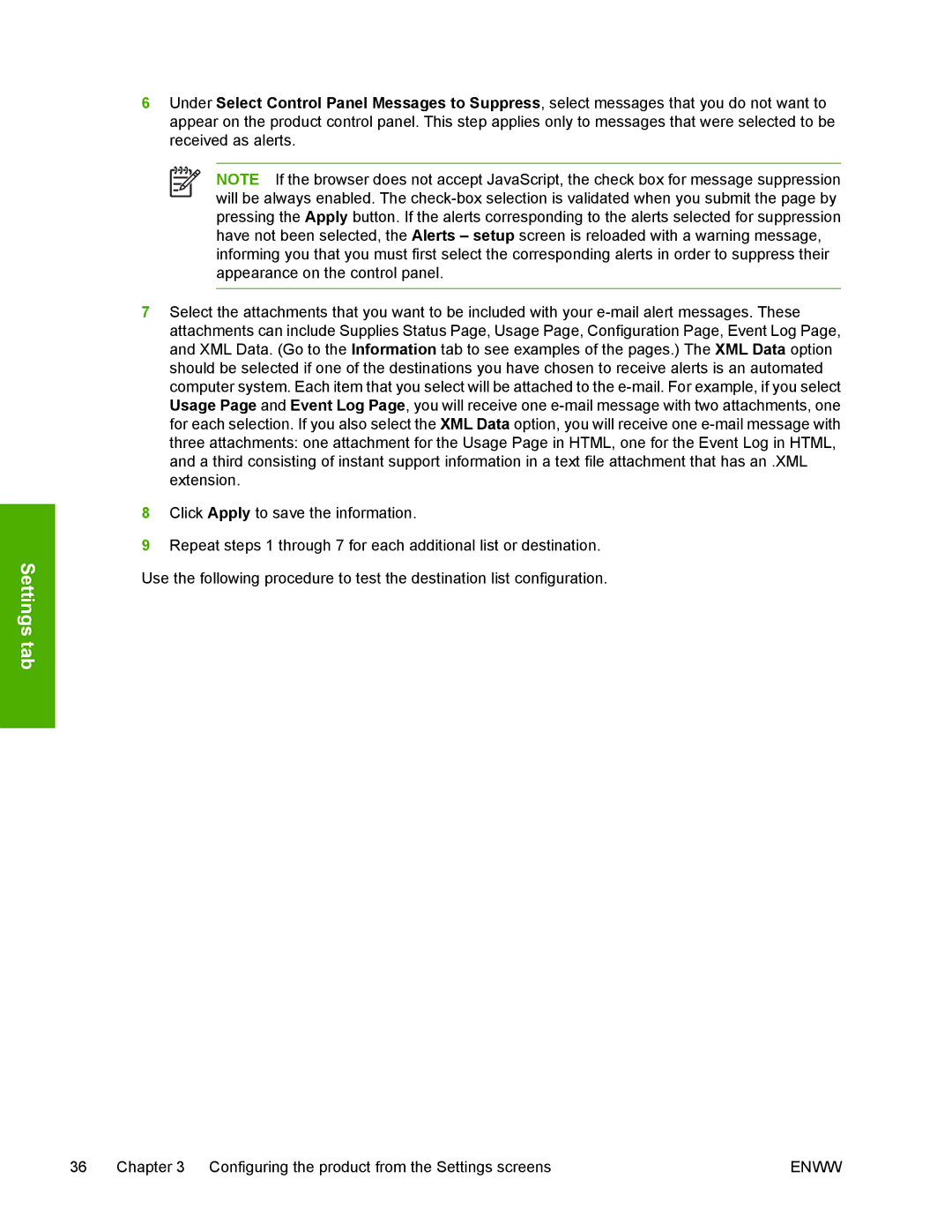6Under Select Control Panel Messages to Suppress, select messages that you do not want to appear on the product control panel. This step applies only to messages that were selected to be received as alerts.
NOTE If the browser does not accept JavaScript, the check box for message suppression will be always enabled. The check-box selection is validated when you submit the page by pressing the Apply button. If the alerts corresponding to the alerts selected for suppression have not been selected, the Alerts – setup screen is reloaded with a warning message, informing you that you must first select the corresponding alerts in order to suppress their appearance on the control panel.
7Select the attachments that you want to be included with your e-mail alert messages. These attachments can include Supplies Status Page, Usage Page, Configuration Page, Event Log Page, and XML Data. (Go to the Information tab to see examples of the pages.) The XML Data option should be selected if one of the destinations you have chosen to receive alerts is an automated computer system. Each item that you select will be attached to the e-mail. For example, if you select Usage Page and Event Log Page, you will receive one e-mail message with two attachments, one for each selection. If you also select the XML Data option, you will receive one e-mail message with three attachments: one attachment for the Usage Page in HTML, one for the Event Log in HTML, and a third consisting of instant support information in a text file attachment that has an .XML extension.
8Click Apply to save the information.
9Repeat steps 1 through 7 for each additional list or destination.
Use the following procedure to test the destination list configuration.

